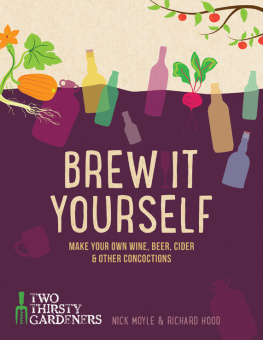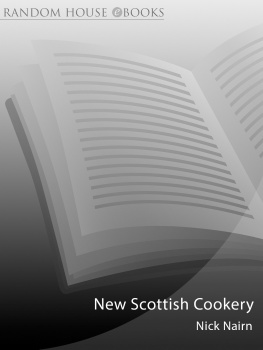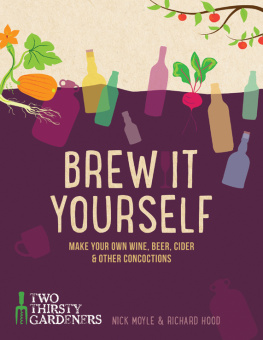Nick Moyle - Wild Tea
Here you can read online Nick Moyle - Wild Tea full text of the book (entire story) in english for free. Download pdf and epub, get meaning, cover and reviews about this ebook. year: 2021, publisher: Stackpole Books, genre: Home and family. Description of the work, (preface) as well as reviews are available. Best literature library LitArk.com created for fans of good reading and offers a wide selection of genres:
Romance novel
Science fiction
Adventure
Detective
Science
History
Home and family
Prose
Art
Politics
Computer
Non-fiction
Religion
Business
Children
Humor
Choose a favorite category and find really read worthwhile books. Enjoy immersion in the world of imagination, feel the emotions of the characters or learn something new for yourself, make an fascinating discovery.

- Book:Wild Tea
- Author:
- Publisher:Stackpole Books
- Genre:
- Year:2021
- Rating:3 / 5
- Favourites:Add to favourites
- Your mark:
- 60
- 1
- 2
- 3
- 4
- 5
Wild Tea: summary, description and annotation
We offer to read an annotation, description, summary or preface (depends on what the author of the book "Wild Tea" wrote himself). If you haven't found the necessary information about the book — write in the comments, we will try to find it.
Wild Tea — read online for free the complete book (whole text) full work
Below is the text of the book, divided by pages. System saving the place of the last page read, allows you to conveniently read the book "Wild Tea" online for free, without having to search again every time where you left off. Put a bookmark, and you can go to the page where you finished reading at any time.
Font size:
Interval:
Bookmark:
Big thanks to everyone who helped us make this book happen, in particular Dave Hamilton for his expert foraging advice and Jane Moore at The Bath Priory for her growing know-how and the photo opportunities her immaculate garden provided. We would also like to thank our foreign correspondents Nagahiro Yasumori, Natsuki Kikuya and Wendy Dewar, as well as those who supplied invaluable knowledge closer to homeSue Mullet of Bath Botanicals, Meghan and Rob at St Austell Brewery and the good folk of St Ives Gin.
Thanks to our agent Jane for connecting us with Lisa Dyer at Eddison Books, who has been full of advice and encouragement, and everyone else involved in the production of the book, including Nicolette Kaponis, Grace Paul, Anna Cheifetz, Ruth Jenkinson (photography) and James Pople (design). Other people we would like to mention for their assistance and support are Becky, Liz and Lenny, Emman Depau and Lyndsey Mayhew.

Finally, Rich would especially like to thank Catherine, Daisy, Emily and Annabel and Nick has oodles of extra gratitude for Kerry and Flynnall for helping us to pick, brew and taste. We promise to never again ask you to try mallow tea (although we cant promise there will be no more stinky seaweed experiments).
We use the term wild tea to cover infusions and decoctions (see below) made from ingredients other than true teas that come from the Camellia sinensis plant (see page 20). These flowers, leaves, seeds, fruits, and roots can be turned into a huge range of delicious drinks, usually with the same minimal effort as brewing a regular cup of tea, giving you an infinite range of flavors to fill your teapots, cups, and mugs.
A number of the ingredients featured in this book can be found in the wild, and many more can be cultivated in the wilds of your own yard (or even a flowerpot or window box for those who have limited space). For us, their wildness is just as much about the experimental process of deviating from familiar teas and into new taste territories.
To get you going, weve picked out our forty favorite wild tea ingredients, chosen not only for their great taste, but also because theyre easy to grow or forage, or they are so essential we couldnt leave them out. Weve also highlighted more ingredients in the Best of the Rest section, focusing on those that didnt quite make our top forty, along with some other interesting and unusual plants with a teatime tale to tell.
For those of you who want some inspiration for blending teas, we have a whole section on just that. Weve also got some extra-special tea and coffee recipes that require a little more effort than simply infusingthese include sun teas, iced teas, bubble teas, and other brewing delights.
However, before all of that, we want to give you a few pointers on how to grow, forage, and dry your own ingredients, and explain some of the key tea terminology so youll be an expert in no time. Now, isnt it time for another cup of tea?
A good cup of tea comes in many guises. The term wild tea encompasses all of the following tea-type drinks:
Teas: There has been some debate about whether herbal, fruit, and botanical teas should technically be labeled as tea. The word tea comes from the common name given to Camellia sinensisthe tea plantso people will argue that it shouldnt be applied to beverages that are made from other ingredients. However, we think language is flexible enough to let us ignore this technicality and refer to all of our infusions and decoctions as tea.
Tisanes: The French already have a word for these drinkstisane. Although its occasionally used in English, it sounds too fancy for common folk like us to use with any confidence, so were sticking with tea.
Infusions: In tea terms, this is the name for a drink made by pouring boiling water over your chosen ingredients and then letting them steep to extract their flavors.
Decoctions: This term is used to describe drinks that have been made by simmering ingredients in boiling water. This method is used to extract flavor from items that are more reluctant to give up their goodness by infusion alone.
We also have a few recipes that tell you how to make coffee and milk substitutes. Although no coffee beans or cows were involved in the making of these drinks, we will refer to them as coffee and milk, because coming up with alternative names is just too confusing.
We find that growing or foraging for your own ingredients is part of the fun of wild tea making. But you dont have to rely on such wild ways to source the goodsrummaging around in stores is a perfectly acceptable method for gathering your tea-making bounties. Even among our forty favorite ingredients, there are a few entries that we neither grow or forage for ourselves (lemon being a notable example), but we deem them too important and tasty to ignore.
Youll be able to make a large number of these teas from ingredients found in a large grocery store, and just about every other item will be available online (particularly in dried form), so you can infuse and decoct without even leaving the house, let alone getting your fingers muddy.
If youre lucky enough to have access to a good herbalist or apothecary, these are the ideal places to source dried ingredients. You can see and sniff (and maybe even have a nibble) before you buy and can usually get whatever amount you want measured out, allowing for you to experiment with the flavors before stocking up on larger quantities.
Although many of the ingredients in this book have well-known health and well-being benefits, were not medical experts and tend to take some of the more remarkable claims with a large dose of skepticism. Even if, for example, you believe that black currant leaves can cure aching joints, you would probably need to take the teas as regular doses over a period of time (just like prescription medicines), in which case we advise first talking with your physician. It is also the case that not all vitamins are water soluble, so simply dunking an ingredient in hot water wont necessarily release all of its good stuff.

Weve highlighted some medical claims surrounding each of our main ingredients to help to build a bigger picture about the reasons for their popularity, but mostly weve included ingredients for their flavor, not their health benefits.
Disclaimer: Its worth mentioning that, as with consuming anything, some of the ingredients featured may cause unwanted side effects, particularly if you ingest a lot of them or start to use them regularly. Anyone with an existing medical condition, or who is pregnant or breastfeeding, should be particularly cautious. Some people can have an allergy to certain ingredients, so treat everything with caution. Its also worth noting that, with many of our ingredients, there are multiple varieties of the same species, so be especially careful to check that the one youre using is safe to consume. If youre not absolutely sure, always err on the side of cautious.
Just as you could argue that tea should only refer to drinks made from the tea plant, you could say that tisane should only refer to drinks made from barley, because the word derives from the Greek ptisane, meaning peeled barley. We told you language was flexible
Font size:
Interval:
Bookmark:
Similar books «Wild Tea»
Look at similar books to Wild Tea. We have selected literature similar in name and meaning in the hope of providing readers with more options to find new, interesting, not yet read works.
Discussion, reviews of the book Wild Tea and just readers' own opinions. Leave your comments, write what you think about the work, its meaning or the main characters. Specify what exactly you liked and what you didn't like, and why you think so.











